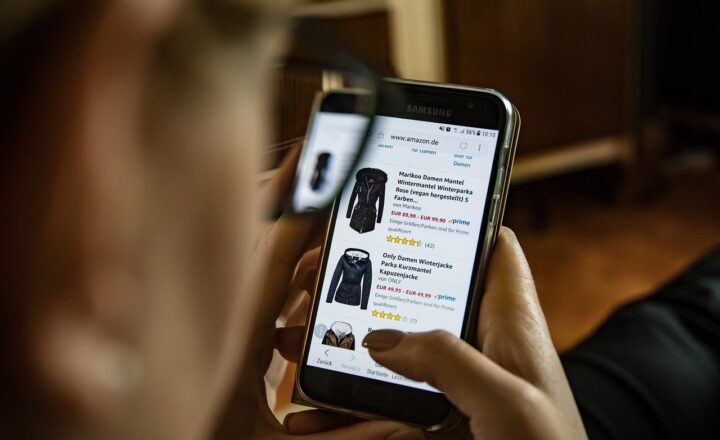The Road Less Traveled: Discovering Hidden Gems in the World of E-Commerce
November 18, 2024

In a world rapidly accelerating toward digitalization, e-commerce continues to shape the way we shop, conduct business, and connect with consumers. While major platforms like Amazon and eBay dominate the landscape, there exists a myriad of untapped opportunities hiding just beneath the surface, waiting for savvy entrepreneurs and consumers to discover their secrets. Today, we will explore some of these hidden gems in the world of e-commerce, showcasing unique markets, innovative business models, and groundbreaking trends that could redefine how we exchange goods and services.
1. The Rise of Niche Marketplaces
In an era of specialization, niche markets allow businesses to cater to specific customer segments with tailored products that larger competitors often overlook. This means that nearly every hobby, passion, or unique interest has led to the emergence of specialized e-commerce platforms. Some examples include:
- Etsy: This platform empowers artisans to sell handcrafted goods, vintage items, and crafting supplies, offering a personal touch absent from mass-produced alternatives.
- Reverb: Specifically designed for musicians, Reverb connects buyers and sellers of new and used musical instruments and gear, allowing a dedicated community to thrive.
- ThredUp: An online consignment and thrift store, ThredUp provides users with a sustainable fashion alternative by reselling second-hand clothing, making it perfect for environmentally conscious consumers.
Niche marketplaces are not only appealing to customers seeking specific products but also to sellers who want to target their marketing efforts and build strong relationships within a community.
2. Subscription Box Services
Subscription box services have revolutionized the shopping experience by making it possible for consumers to discover new products regularly. By offering curated selections based on consumer interests, these services create excitement and anticipation. Some noteworthy examples include:
- Birchbox: This service introduces customers to premium beauty products through monthly sample boxes, encouraging them to explore new brands without the commitment of full-size purchases.
- Blue Apron: A meal kit delivery service that provides ingredients and recipes for home-cooked meals, catering to busy individuals and families looking for culinary inspiration.
- KiwiCo: Designed for children, KiwiCo sends monthly STEM-focused projects designed to be both educational and entertaining, promoting creativity and problem-solving skills.
Subscription boxes foster a sense of community among users while also enabling small businesses to reach a broader audience and create loyal customers.
3. Sustainable and Ethical E-commerce
As consumers become increasingly eco-conscious, businesses that prioritize sustainability and ethical practices are gaining traction. E-commerce platforms that focus on environmentally friendly products and regenerative practices are attracting customers who wish to make meaningful purchases. Brands to consider include:
- Package Free: Specializing in zero-waste products, this online store promotes sustainability, reducing plastic waste and encouraging users to adopt eco-friendly habits.
- Allbirds: Known for their sustainable footwear, Allbirds uses renewable materials such as merino wool and eucalyptus tree fiber to create shoes with a minimal carbon footprint.
- Ethique: A company that produces solid beauty bars, eliminating the need for plastic packaging while addressing the beauty industry’s wastefulness.
By choosing to support brands and e-commerce platforms that prioritize sustainability, consumers can make a positive impact on the planet while meeting their daily needs.
4. The Evolution of Social Commerce
Social media has become more than just a platform for connection; it has transformed into a significant e-commerce channel known as social commerce. Integrating shopping directly within social media platforms allows users to discover, share, and purchase products seamlessly. Here are some notable aspects:
- Instagram Shopping: With features tailored for seamless shopping experiences, users can explore products and make purchases without leaving the app, creating a more fluid and engaging experience.
- Facebook Marketplace: Connecting local buyers and sellers, this platform empowers users to engage with their communities, making it easier to buy and sell second-hand items, sometimes at local prices.
- TikTok for Business: With viral trends and relatable content, brands are using TikTok to showcase their products and drive engagement, turning followers into consumers through creative storytelling.
As social media platforms continue to evolve, they will likely bolster the growth of social commerce, further blending entertainment and transactions.
5. Innovative Payment Solutions
The payment process is a critical element in the e-commerce experience. Innovative payment solutions are reshaping how consumers complete transactions online, making it easier and more convenient than ever. Consider these options:
- Buy Now, Pay Later (BNPL): Services like Affirm and Afterpay allow shoppers to pay for their purchases in installments, encouraging higher spending by reducing upfront costs.
- Cryptocurrency Payments: As cryptocurrencies gain mainstream acceptance, more retailers are accepting digital currencies like Bitcoin for transactions, appealing to tech-savvy consumers.
- Mobile Wallets: Services like Apple Pay and Google Wallet are facilitating quick and secure payment options directly from smartphones, enhancing convenience for users on the go.
Innovative payment methods can alleviate pain points for both customers and businesses, leading to higher conversion rates and increased customer satisfaction.
6. Customization and Personalization
Consumers crave unique experiences, and e-commerce businesses are rising to the occasion by offering customized products tailored to individual preferences. By leveraging data and technology, companies are creating personalized shopping experiences that resonate with customers. Examples include:
- Nike By You: This platform allows customers to design and personalize their own sneakers, catering to personal style and preference.
- Shutterfly: Users can create personalized photo books, gifts, and cards by uploading their pictures and customizing them to make sentimental products.
- Bombas: This online retailer offers custom-fit socks, allowing customers to select specific sizes, colors, and designs, ensuring a perfect match for their wardrobe.
By providing opportunities for customization and personalization, e-commerce businesses can create deeper connections with their customers while increasing the likelihood of repeat purchases.
Conclusion
The world of e-commerce is brimming with hidden gems waiting to be discovered. From niche marketplaces to innovative business models and expanding payment solutions, the landscape is continuously evolving. As technology advances and consumer preferences shift, opportunities for entrepreneurs and consumers abound. By exploring these hidden gems, you can uncover new paths for growth, engagement, and success in the world of e-commerce. Embrace the adventure ahead, and you just might find the fortunes that lie along the road less traveled.





